 Image via Wikipedia
Image via Wikipedia
If you are contemplating touring Europe, you should consider the Basilicata region of southern Italy. Basilicata forms the instep of the Italian boot and has two small seacoasts, one on the Ionian Sea in the east and one on the Tyrrhenian Sea in the west. Depending on your interests, Basilicata may be an ideal vacation spot. You can get classic Italian food, and wash it down with fine local wine. Basilicata is among the few regions of Italy as yet undiscovered by tourists. There's a tradeoff; you won't have to fight the crowds to see what you want to see. On the other hand, you'll have a hard time finding fancy hotels. And its roads are not always the best, hardly surprising when you consider the region's mountainous terrain.
Basilicata's population is only slightly above six hundred thousand. While quite mountainous this is the only region of Italy in which farm workers outnumber industrial workers. Until the 1970s Basilicata steadily lost population to other Italian regions and to emigration abroad. But all is not lost. Its east coast has become an important agricultural area. And the mountainous interior with poor soil and lots of sun; what could be better for producing fine wine? Let's not forget that many consider Basilicata's native Aglianico (also found in Campania) to be Italy's third best red grape, after Nebbiolo and Sangiovese. It sounds like there could be a major breakthrough in Basilicata's wine industry.
We'll start our tour of this region in the northeast at Matera. Then we head south and east to Potenza. From there we proceed southeast to Aliano and then south and east to Terranova di Pollino and the Parco Nazionale. For some seaside you could continue to the little town of Maratea on the coast of the Tyrrhenian Sea. When driving in this part of the world, you'll need a good map and good reflexes; the roads here don't always go directly from Point A to Point B and rarely go in a straight line.
Matera, population sixty thousand, lies just south of the Apulia border. This area has been settled since Palaeolithic times, in other words for at least twelve thousand years. The Romans claimed to have founded the city in the Third Century B. C. Like so many other parts of Italy it was occupied by an almost never-ending stream of invaders. One of Matera's proudest moments occurred in September 1943 when it rose against the German invaders, the first Italian city to do so. We'll start with the usual sights and finish with something truly unique.
Matera's Duomo (Cathedral) dates from the Thirteenth Century and was built in the Apulian-Romanesque style (Apulia is the region north of Basilicata, its architecture reflects Greek, Arab, and Norman influences.) There are frescoes and sculptures to admire. Be sure to find out if the Thirteenth Century Romanesque Church of San Giovanni Battista has been reopened for tourists. If so, stop by. But these sights pale in comparison to Matera's unique old town whose streets are often rooftops and whose houses, churches, and chic restaurants are caves, hewn out of solid rock.
The Sassi di Matera (Stones of Matera) are caves that have been occupied continuously by human beings for an estimated nine thousand years. At twenty years per generation, (remember they didn't wait to finish law school before starting a family in those days) this works out to an incredible 450 generations possibly living in the same neighborhood. The area has been named a World Heritage Site and numerous bars and restaurants now take advantage of this unique location. What a turnaround from the days when Matera because of the Sassi was called ''la vergogna nazionale,'' Italy's shame.
Potenza with a population slightly under 70 thousand is the capital of Basilicata. Here in a famous battle Carthage definitively lost to Rome. The city has endured many invasions and earthquakes, the latest in 1980. During the Second World War the Allies heavily bombarded Potenza. Monuments to see include the Twelfth Century St. Gerard Cathedral, and the Eleventh Century Church of San Francesco which includes a Renaissance painting entitled Madonna del Terremoto (Our Lady of the Earthquake). The Romanesque Church St. Michael the Archangel was also built in the Twelfth Century as was the Church of St. Mary of the Sepulcher. You should also visit the Castle's Tower built prior to the year 1000 and the ruins of a Norman fort, said to be built on Roman and Byzantine foundations. All in all there's a lot of old stuff to see for a small provincial capital that was almost destroyed by earthquakes.
With less than twelve hundred inhabitants you might be tempted to skip the village of Aliano. Don't, it's living proof of the phrase - good things come in small packages. The scenery is spectacular; cliffs and rivers, and gullies, and local growing things include olive, peach, and citrus trees. This lovely scenery may be typical of the region. However, unlike any neighboring village Aliano is famous thanks to an involuntary visitor who stopped by more than seventy years ago. Between May, 1935 and October, 1936 Aliano was the home in exile of the well-known author Carlo Levi. Levi, a painter educated as a doctor, was a founder of an Italian anti-Mussolini movement. This explains his unintentional extended Aliano visit. After his release from exile Levi spent two years in France but returned to Italy and was imprisoned once again. After the war he wrote a book, Christ Stopped at Eboli, describing his Aliano experiences. This book exposed the problem of poverty in Southern Italy to the relatively prosperous North. Levi served nine years in the Italian Senate where he continued his fight against poverty. He is buried in the village. The house where he lived is still standing; it is now the Museo Storico Carlo Levi (Carlo Levi Historical Museum).
Terranova di Pollino is a mountain village in southern Basilicata very close to Calabria. It lies at the entrance to the Parco Nazionale del Pollino (Pollino National Park), Italy's largest measuring just under 750 square miles (more than 1900 square kilometers.) Let's quote their website "With its 192,565 hectares, Pollino National Park, the largest protected area in Italy between Calabria and Basilicata, has a wealth of landscapes to offer: great areas of wilderness where the cuirassed pine -the true emblem of the park- clings to the rocky slopes as the wind shapes its twisted trunk; not far away, rolling hills and valleys, lush slopes with flowering plants in springtime, and then endless upland plains where the sheep still graze like in ancient times."
But that's not all. The park is home to a wide variety of endangered species. Many fossils have been found including a very well preserved giant elephant skeleton dating back 400,000 to 700,000 years. Other fossils date from the time when dinosaurs ruled the earth. You'll have no trouble finding historic churches in the neighboring villages. Many of these villages are home to ethnic Albanians who managed to maintain their language and culture for over five hundred years. Look for their festivals during the spring and summer months.
What about food? Basilicata is very traditional when it comes to cooking. As expected in an economically deprived area meat consumption is limited. The major meat is pork and the locals know how to extract the maximum from their porkers. Hot peppers are popular and can be quite hot. Basilicata bread is consumed in many parts of Italy. Locals make a special pasta from wheat and lard. The Pollino mountains are famous for their wild mushrooms and for game.
Let's suggest a sample menu, one of many. Start with Zuppa di Pesce alla Santavenere (Ionian Fish and Seafood Soup). Then try Spezzatino di Agnello (Lamb stewed in an earthenware pot). For dessert indulge yourself with Frittelle alla Lucana (Doughnuts). Be sure to increase your dining pleasure by including local wines with your meal.
We'll conclude with a quick look at Basilicata wine. Basilicata ranks 17th among the 20 Italian regions for the acreage devoted to wine grapes and for total annual wine production. About 73% of the wine produced is red or rosé, leaving 27% white. The region produces two DOC wines, Aglianico del Vulture and Terre dell Alta Val d'Agri. DOC is short for Denominazione di Origine Controllata, which may be translated as Denomination of Controlled Origin, presumably a high-quality wine. Only 2.4% of Bascilicata wine carries the DOC designation.
If you like powerful wines, try the Aglianico del Vulture from a local grape that grows on the extinct Mount Vulture volcano or its surrounding hills. This wine may be cellared for up to twenty years. The sparkling version may be either dry or sweet. The red Terre dell Alta Val d'Agri is composed of Merlot, Cabernet Sauvignon, and perhaps some local red grapes. The rose version may include some local white grapes as well.
------------------------
Levi Reiss is the author or co-author of ten computer and Internet books, but to tell the truth, he would rather just drink fine Italian or other wine, accompanied by the right foods. He knows about dieting but now eats and drinks what he wants, in moderation. He teaches classes in computers at an Ontario French-language community college. His new wine, diet, health, and nutrition website http://www.wineinyourdiet.com links to his other sites.
Search Amazon.com for vino con vista
![Reblog this post [with Zemanta]](http://img.zemanta.com/reblog_e.png?x-id=da485994-d7ac-428a-a2a2-81c28a79946d)
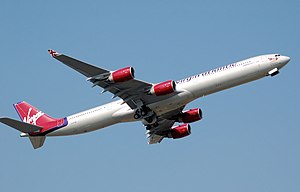
![Reblog this post [with Zemanta]](http://img.zemanta.com/reblog_e.png?x-id=b8c2097a-6fc5-41c3-9b7a-9256dce6c6b1)

![Reblog this post [with Zemanta]](http://img.zemanta.com/reblog_b.png?x-id=bd9fa198-0c1d-45fd-90d4-80cbbced0180)

![Reblog this post [with Zemanta]](http://img.zemanta.com/reblog_b.png?x-id=29ba5192-ff9e-4270-918b-78423f6548b7)

![Reblog this post [with Zemanta]](http://img.zemanta.com/reblog_b.png?x-id=59f816a9-7bdc-42f1-820f-f3237c8ba398)
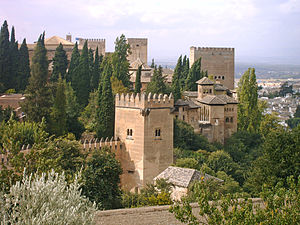
![Reblog this post [with Zemanta]](http://img.zemanta.com/reblog_b.png?x-id=30a50ca1-86bd-4131-8dff-c28611c19a0e)
![Reblog this post [with Zemanta]](http://img.zemanta.com/reblog_b.png?x-id=de673d3c-f74f-4d53-b2a0-70d2a74ef4e5)

![Reblog this post [with Zemanta]](http://img.zemanta.com/reblog_b.png?x-id=139e013d-96d5-4a5c-8bbf-90ebe0ac61c0)
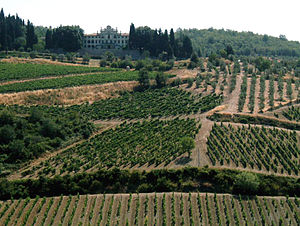
![Reblog this post [with Zemanta]](http://img.zemanta.com/reblog_b.png?x-id=6c9f901d-8c63-42ee-ade1-e2cf06698fe3)
![Reblog this post [with Zemanta]](http://img.zemanta.com/reblog_b.png?x-id=584dffc2-15fc-4f0e-99a5-01031cda5278)

![Reblog this post [with Zemanta]](http://img.zemanta.com/reblog_b.png?x-id=b2b351d6-feaa-4f70-bcae-0d5e525834bb)
![Reblog this post [with Zemanta]](http://img.zemanta.com/reblog_b.png?x-id=a8e753c1-f64f-8fb7-9cea-022b047ca4aa)

![Reblog this post [with Zemanta]](http://img.zemanta.com/reblog_b.png?x-id=87624db8-69da-43c4-965f-52ba32eb0c13)
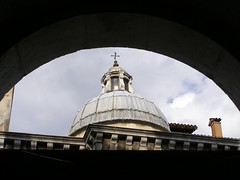
![Reblog this post [with Zemanta]](http://img.zemanta.com/reblog_b.png?x-id=45c1b441-6b38-4cf8-abb4-52e3368dfb38)
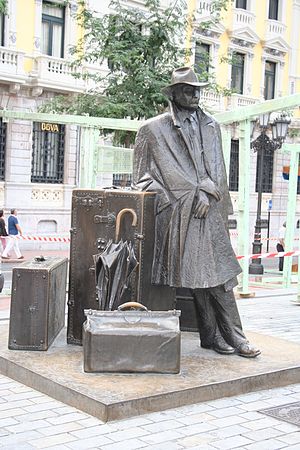
![Reblog this post [with Zemanta]](http://img.zemanta.com/reblog_b.png?x-id=220974d3-cdf5-43a6-be55-6940825430f1)
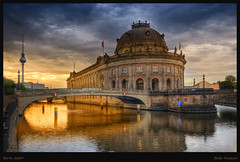
![Reblog this post [with Zemanta]](http://img.zemanta.com/reblog_b.png?x-id=34f41dfa-436e-4b06-8396-85458db932c7)
![Reblog this post [with Zemanta]](http://img.zemanta.com/reblog_e.png?x-id=80560088-8ab0-431e-b5cd-b16146282724)
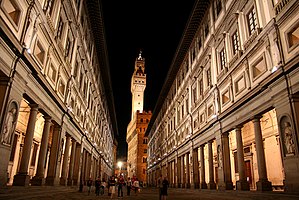
![Reblog this post [with Zemanta]](http://img.zemanta.com/reblog_b.png?x-id=5e122f36-08f2-8b36-8ba1-b87439a9da95)
![Reblog this post [with Zemanta]](http://img.zemanta.com/reblog_b.png?x-id=55f965f0-77e8-4688-8427-4fb7b9845f86)